We have had the fortune of putting big hours on Yamaha long term scooters, both small capacity, great in town. But what if you need town manners and highway ability? Try the XMAX 300...
The 2025 Yamaha XMAX 300 combines premium scooter features with practical urban performance. With a new TFT dash, updated styling, and impressive touring capability, it’s LAMS-approved and ready to ride. Here’s our 2025 Yamaha XMAX 300 Review…
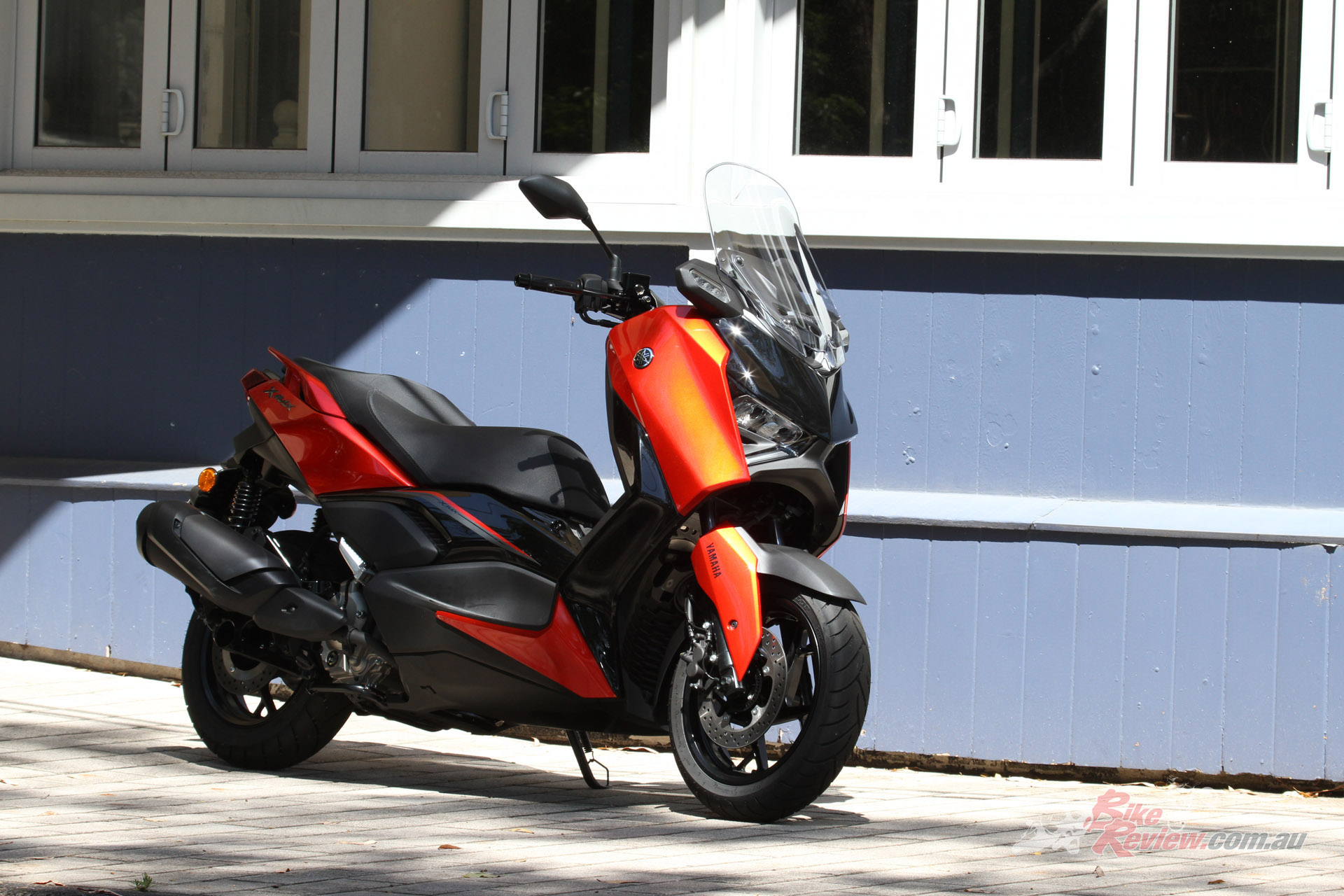
The XMAX 300 features an electrically adjustable screen, new TFT dash, TC, keyless ignition, and new styling…
After spending six months on our long-term NMAX 155, I was keen to step up to Yamaha’s updated 2025 XMAX 300, especially with plenty of freeway miles and long commutes ahead of me.
Read our Long Term Yamaha NMAX 155 articles here…
The MAX family has become my default litmus test for how far modern scooters have come. After six months of splitting city lanes on our long-term NMAX 155, and six months prior to that on our little D’eLight) I jumped at Yamaha’s offer to collect the first Australian press unit of the updated 2025 XMAX 300. Ninety minutes of motorway separated Yamaha HQ and BikeReview HQ, so I knew I’d have the perfect shakedown ride to kick things off, and to test that adjustable screen…
First impressions start before the wheels roll. The new X-shaped LED head and taillights tie the 300 visually to its TMAX and NMAX siblings, but the 300’s sheer size surprised me. At 2180mm long and 800mm wide it dwarfs the pint-sized 155, and the 187kg wet weight is on par with many 700–900cc motorcycles. Yet the detailing is premium: Dynamic Red bodywork set against gloss-black panels, and the latest 4.2-inch colour TFT screen sits neatly in the dash surround.
Before rolling away I paired my iPhone to Yamaha’s Y-Connect app but I didn’t claim the complimentary Garmin navigation licence. It took seconds, and notifications for calls, messages and battery status popped up cleanly on the dash. A long press of the left-bar switch then raised the electric windscreen to its tallest position. I’m 187cm, and at 110km/h, unfortunately, wind turbulence still reached my helmet in both screen positions and the helmet shake was pretty distracting. I tested this with multiple helmets and found it a persistent issue due to my height, likely needing a cut-down or aftermarket screen.
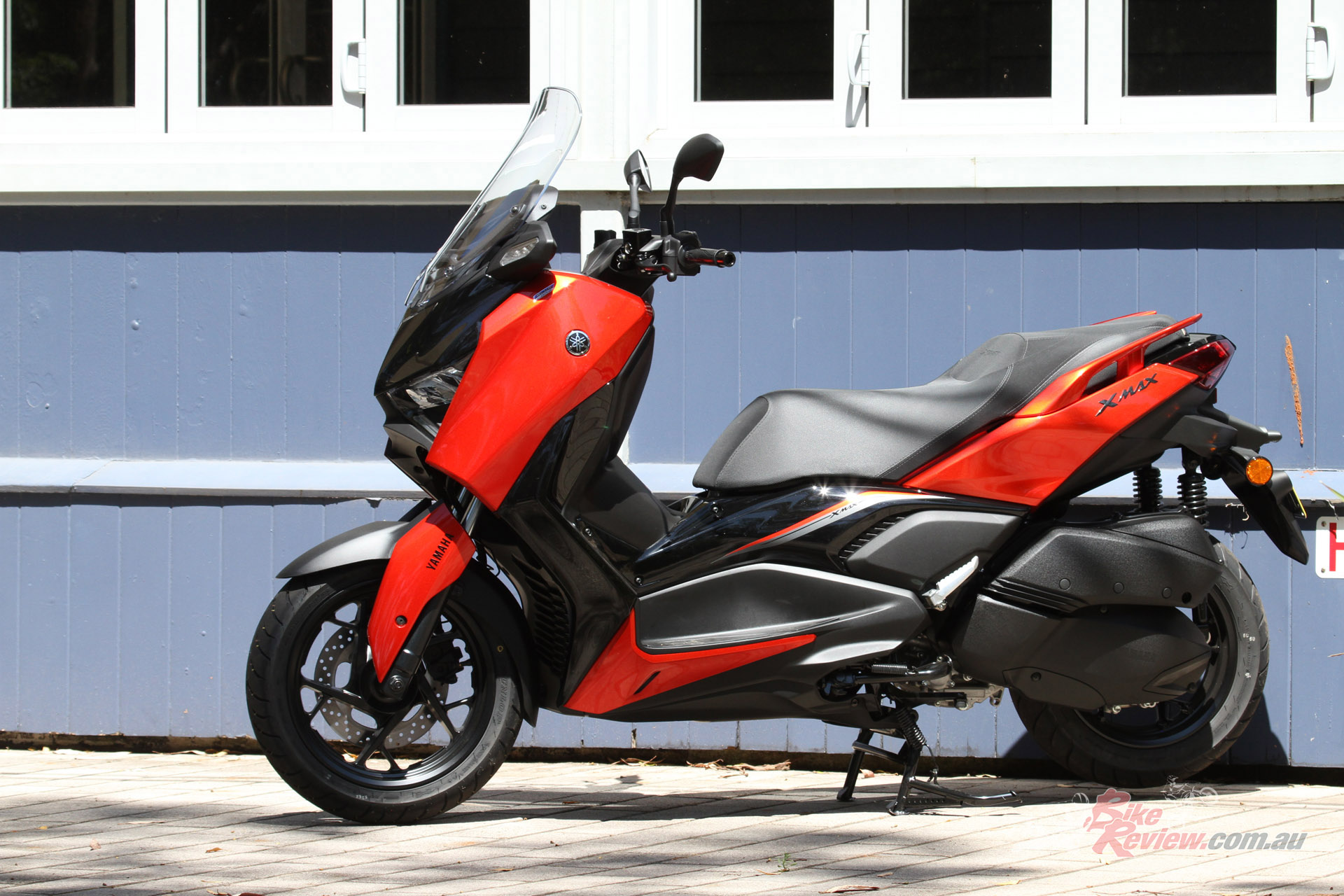
Yamaha claim 20kW@7250rpm/29Nm@5750rpm, making it LAMS-approved, yet the XMAX delivers a good mix level of mumbo for a big scooter.
Motorway cruising proved effortless otherwise: the proven and unchanged 292cc Blue Core single purrs along yet musters enough shove to slingshot past cars or tackle uphill sections. Yamaha claim 20kW@7250rpm/29Nm@5750rpm, making it LAMS-approved, yet the XMAX delivers a good mix level of mumbo for a big scooter. After the first 120km the fuel needle hadn’t budged far, and it averaged just 3.3 L/100km during my test, meaning the 13-litre tank offers a potential range of around 390km.
The step from NMAX to XMAX isn’t only about speed. Twist the throttle away from lights and the 300 sends a fatter wedge of torque to the CVT, jumping two car lengths ahead of traffic before the tin-tops realise the light’s green. The rubber-mounted engine, forged piston and offset cylinder tame vibration, so mirrors stay clear right into triple figures.
At the other end of the scale, crawling through Sydney’s Friday gridlock, the engine is tame, smooth and the throttle is really gentle and progressive. Knowing it has the Antilock Braking System (ABS) and Traction Control (TC) adds to the safe feel in the City, features the XMAX has had since 2019…
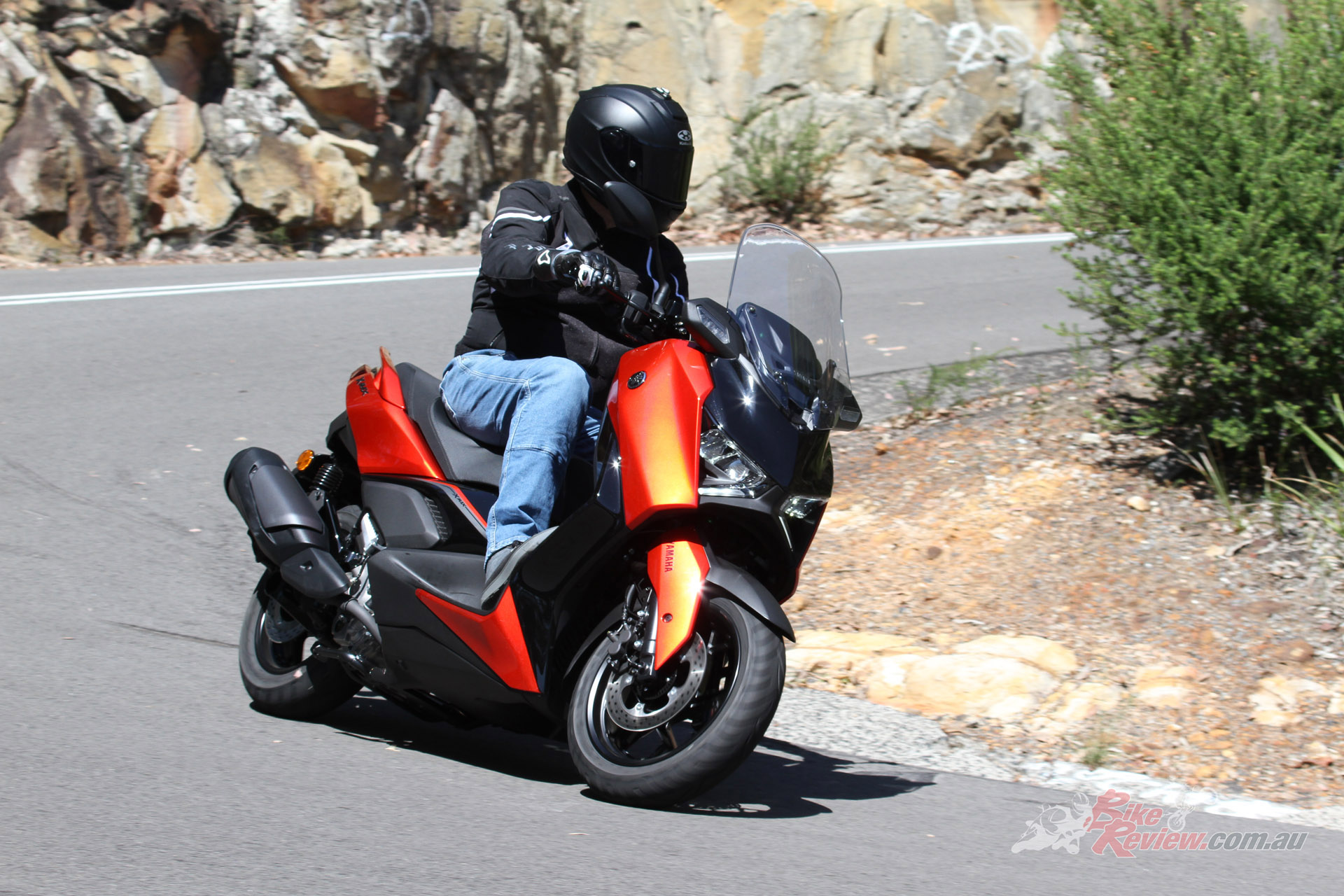
A steel underbone frame carries a proper 33mm fork with 110mm of travel and twin shocks delivering 79mm out back.
Handling is where the XMAX genuinely feels more motorcycle than scooter. A steel underbone frame carries a proper 33mm fork with 110mm of travel and twin shocks delivering 79mm out back. Yamaha sets the steering geometry conservative enough for motorway stability yet there’s still eagerness when you tip onto the 120/70-15 and 140/70-14 tyres. On my favourite piece of coastal backroad the XMAX cornered through bends with composure that belies the wheel sizes, the long wheelbase and weight.
Speaking of pillions, Heather was instantly sold. The stepped seat is deep and supportive, the grab-rail chunky, and the new bodywork shields knees from wind, but it is quite a big step up onto the pillion seat. Under-seat storage takes one full-face and one open-face lid, plus gloves and a folded jacket; two full-faces would be nicer, but you can always fit Yamaha’s 34-litre top case.
My only real gripe is the smart-key system. The central knob controls ignition, steering lock, fuel cap and seat catch, but you have to push, turn, press and repeat a number of times to access what you want. I’d prefer a traditional key every time.
The seat itself is large and firm, great for longer rides, though I found the front portion quite narrow. While this did aid stepping on and off the bike, which is excellent for shorter riders, it did compromise comfort a little for me. Riders with larger feet may also find the underbone frame’s central tunnel somewhat limiting. I wear size 12s and found foot positioning slightly cramped in stop-start traffic.
Practical niceties continue with a USB-C outlet in the left glovebox for phone charging, and a traction-control system rare in this class. I deliberately rolled onto a sandy verge to feel it intervene. Sure enough, as the rear skated the ECU trimmed torque gently before drive resumed. Add ABS and you have a reassuring suite for wet cobbles and tram tracks.
Suspension comfort is another highlight. Those proper forks glide over potholes that sent jolts through the NMAX, and the shocks soak up square-edged hits without fuss when I dialled up the (scooter level) pace. Around town the XMAX never feels flustered by expansion joints or shopping-centre ramps. The wide seat sits 795mm off the deck, so shorter riders may need the balls of their feet at standstill, but once rolling the low centre of gravity disguises the heft.
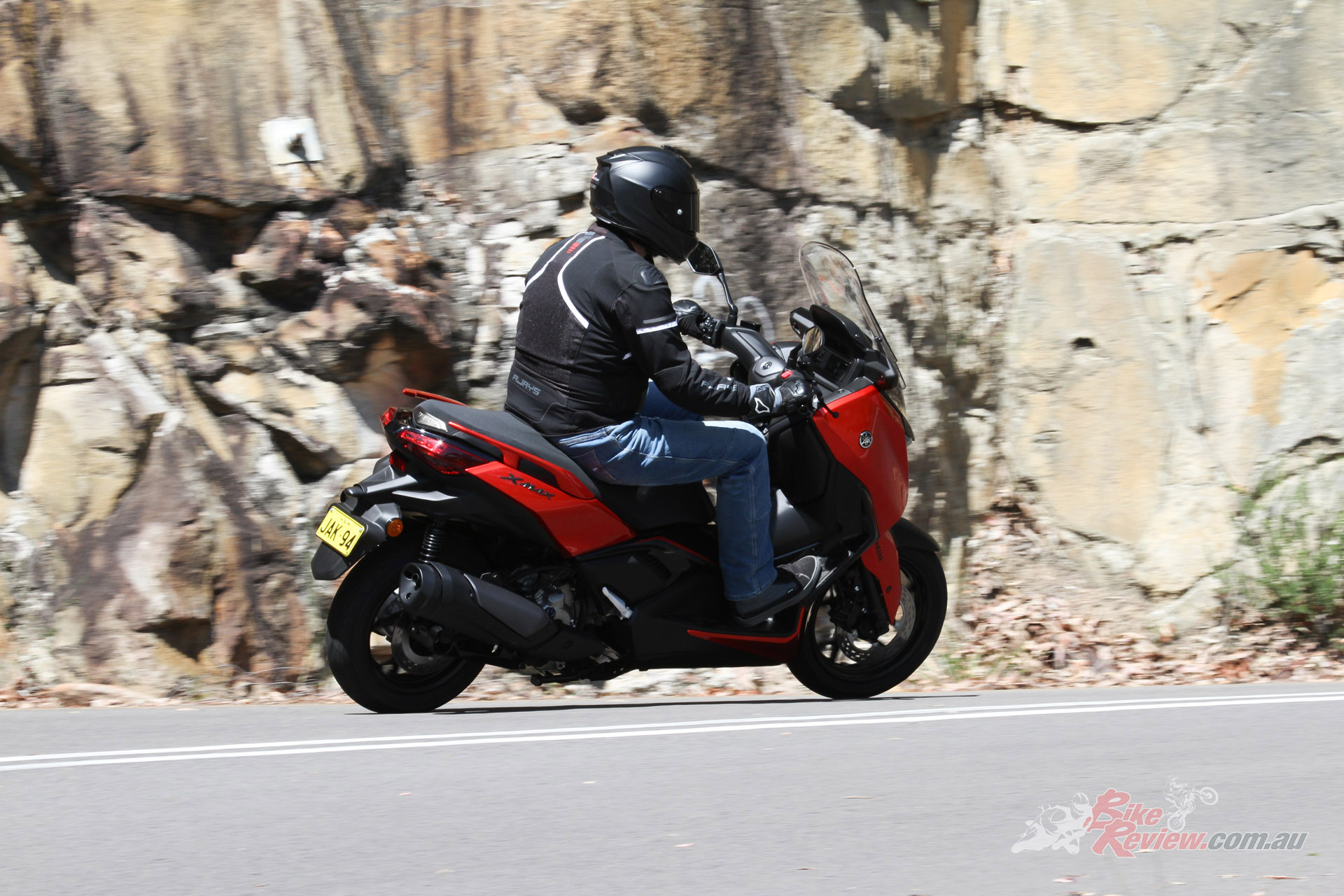
An advantage of a bigger scooter like the XMAX is that you can get out of town and enjoy the local rides…
A weekly shop is easy: park on the centrestand, pop the seat and load it up – there is a bit of muscle required to get it on the centre-stand, as is the case with all scooters given the engine and drivetrain weight is basically straight over the stand area. Once you get used to the technique, it’s not an issue, but is harder than most motorcycles to put up. The sidestand is handy, if a little awkward to reach.
The bar-mounted switches are intuitive and familiar after a short time, the mirrors are fine and do the job, the levers are bike size rather than the minibike sized ones on smaller scooters, and the new dash is pretty good, although it is a little hard to see in full sun. There are multiple functions and settings in the one theme (see above series of images), and it’s all straight forward and easy to navigate… Having the connectivity as well as the Garmin access saves adding an aftermarket CarPlay type Nav screen.
Living with the XMAX should be cheap. Service intervals sit at 1000km then every 6000km or 12 months, and the single-cylinder engine needs just 1.3L of oil per change. The V-belt and rollers are due at 20,000km, a two-hour workshop job, and real-world fuel use hovers around 3.5-3.8L/100km if you resist constant full-throttle antics.
Australian riders get three colours for 2025: Dynamic Red (our bike), Ceramic Grey with gold wheels and Dark Magma. I would love to see the gold rims offered across all colours for extra bling. Yamaha lists a healthy catalogue of genuine accessories: taller touring screen (I want to try that and update you guys here), heated grips, apron cover, aluminium footplates, sport muffler and comfort seat.
Those accessories could help customise the XMAX to your needs, and add some more usability to this already excellent scooter. Just having the option to get out of town, tour or highway commute, not be limited to the suburbs, is what makes the XMAX 300 so good, allowing riders that don’t want a full blown maxi scooter but still want some freedom and two-up ability.
So who is the XMAX 300 for? Anyone who wants motorcycle without the chore of clutch-lever traffic crawls. Commuters who tackle freeway and CBD in one hit. Riders stepping up from a small capacity platform who don’t yet want the price or size of a twin-cylinder bike. At $10,249 ride-away it sits between the $6,499 NMAX 155 and the luxury $21,599 TMAX TECH MAX 560.
If you need a single machine to slaughter weekday commutes and escape for coastal weekends, the 2025 XMAX 300 should sit right at the top of your shopping list. Go try one for yourself…
2025 YAMAHA XMAX 300 SPECIFICATIONS
Price: $10,249 R/A
Warranty: Two-year, unlimited kilometre
Colours: Dynamic Red, Ceramic Grey (gold wheels), Dark Magma
Claimed power: 20.6kW@7250rpm
Claimed torque: 29Nm@5750rpm
Wet weight: 187kg
Fuel capacity: 13L
Fuel consumption: (Claimed) 3.1L/100km
Fuel consumption: (Measured) 3.3L/100km
Fuel Range: Approx 390km
Engine: Liquid-cooled, SOHC, single-cylinder, fuel-injected four-valve, four-stroke, 292cc, 70.0 x 75.9mm bore x stroke, 10.9:1 compression, V-Belt Automatic, Blue Core Technology, CVT drive.
Chassis: Underbone steel tube frame
Rake: 26.5º Trail: 94mm
Suspension: 33mm telescopic forks, 110mm travel, twin rear shocks, 79mm travel
Brakes: ABS, single 267mm front rotor, 245mm rear rotor, single-piston calipers
Wheels & Tyres: Alloy wheels, 120/70 – 15 (front), 140/70 – 14 (rear) Dunlop Scoot Smart
Dimensions:
Wheelbase: 1540mm
Seat height: 795mm
Overall height: 1410mm
Overall width: 800mm
Overall length: 2180mm
Ground clearance: 135mm
Instruments & Electronics: 4.2in TFT display, Keyless Fob, Garmin-compatible navigation via Y-Connect App, Traction Control System, ABS, Electric windscreen (95mm range), USB-C port
Ratings | Bike Review | 2025 Yamaha XMAX 300 LAMS Scooter


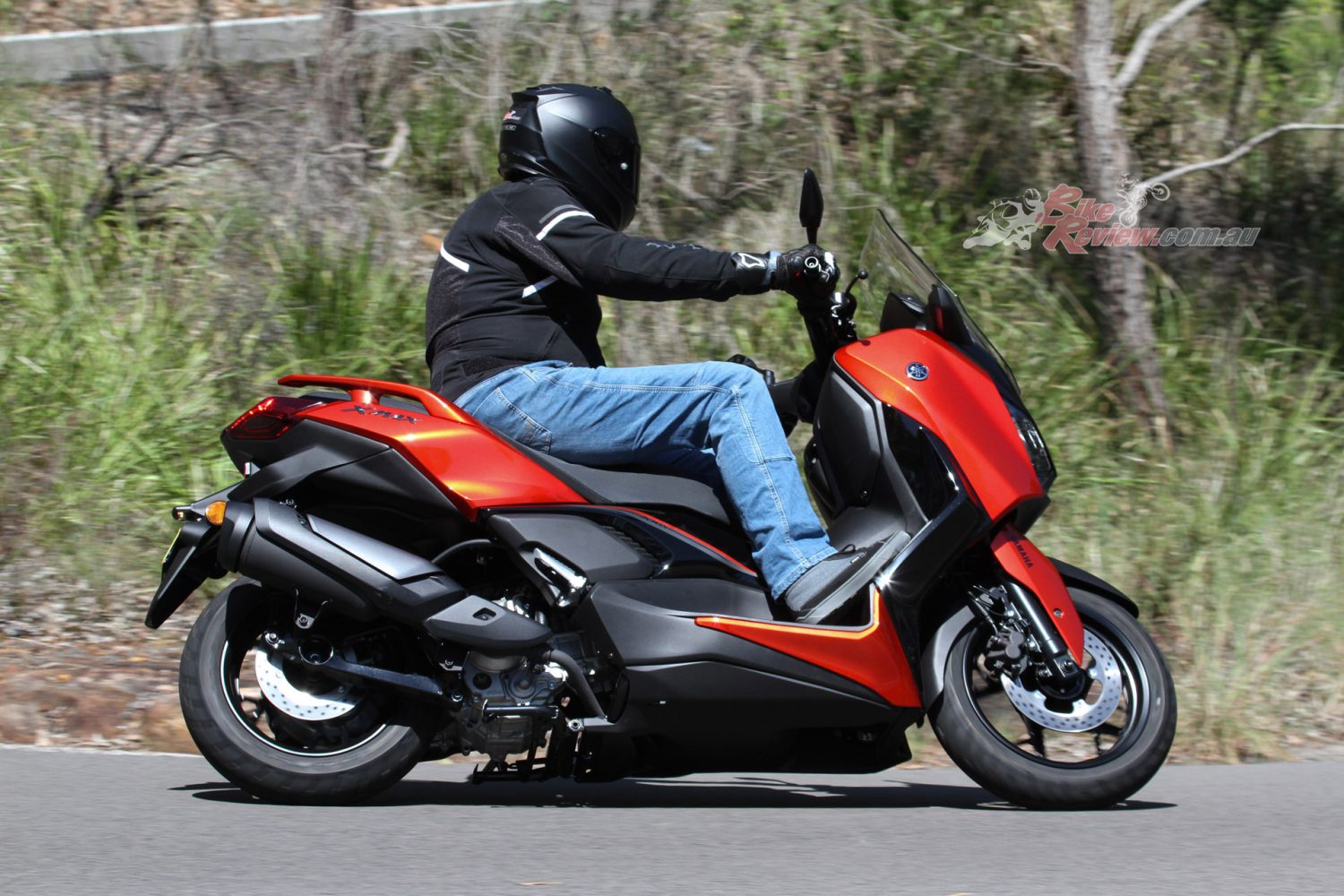

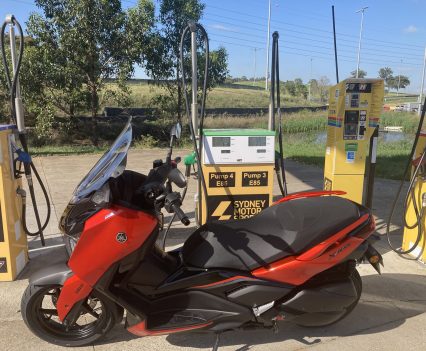
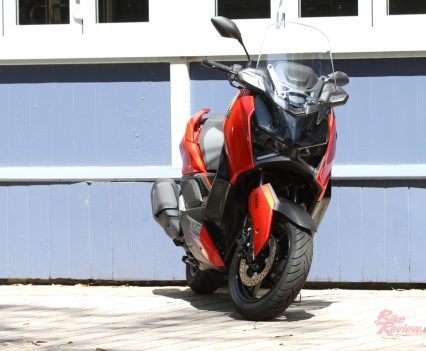
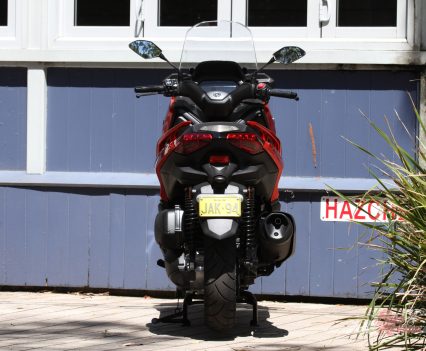
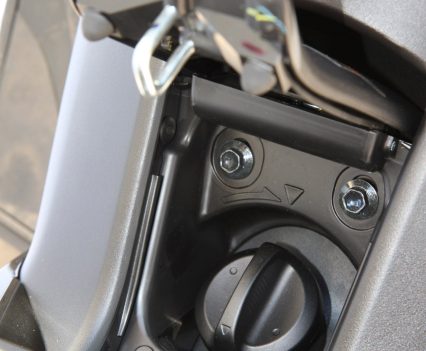
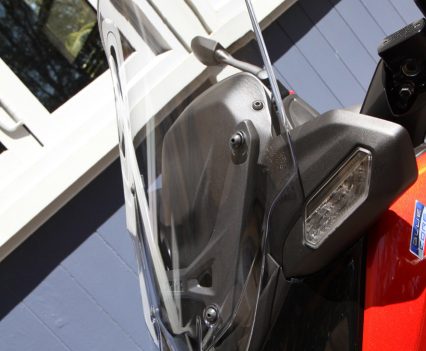
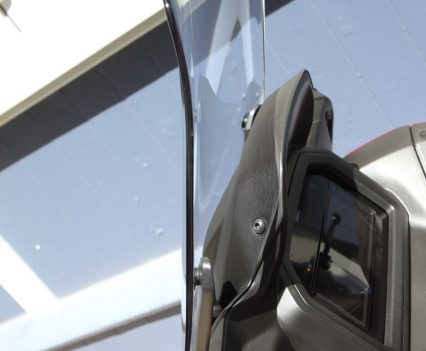
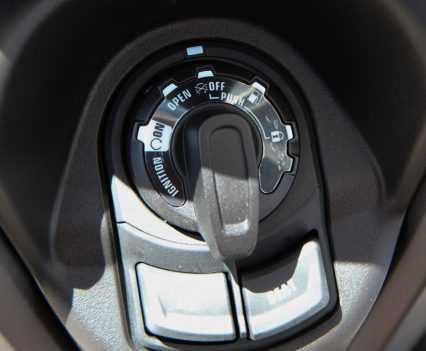
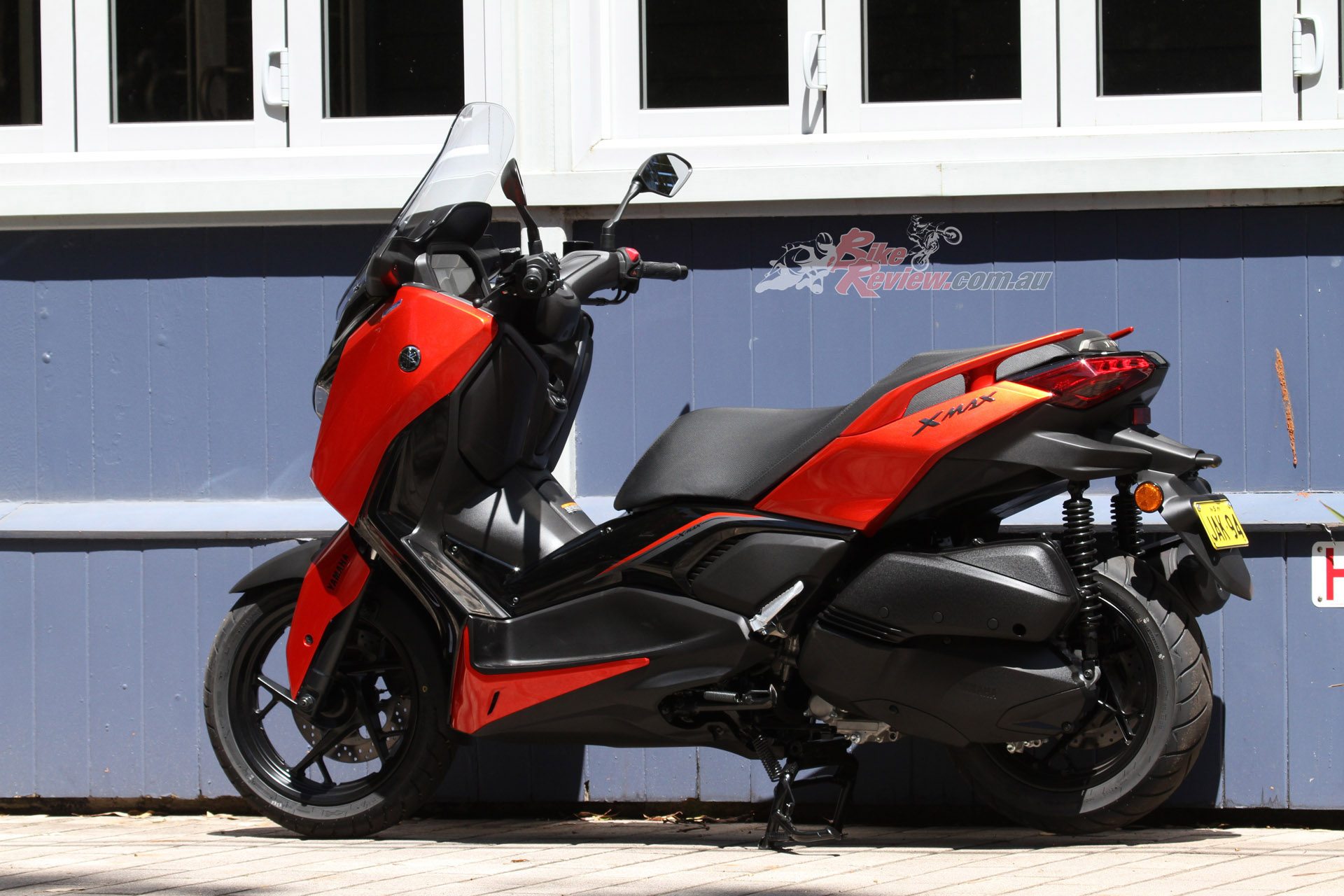
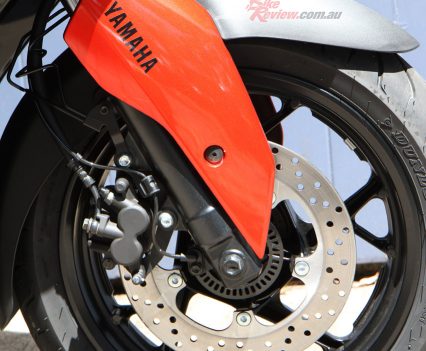
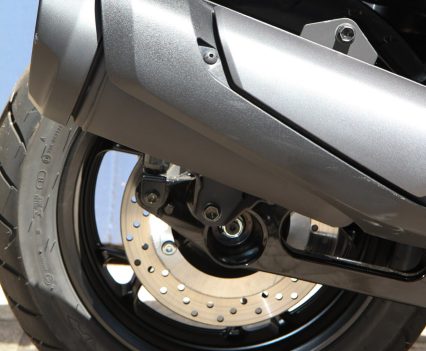
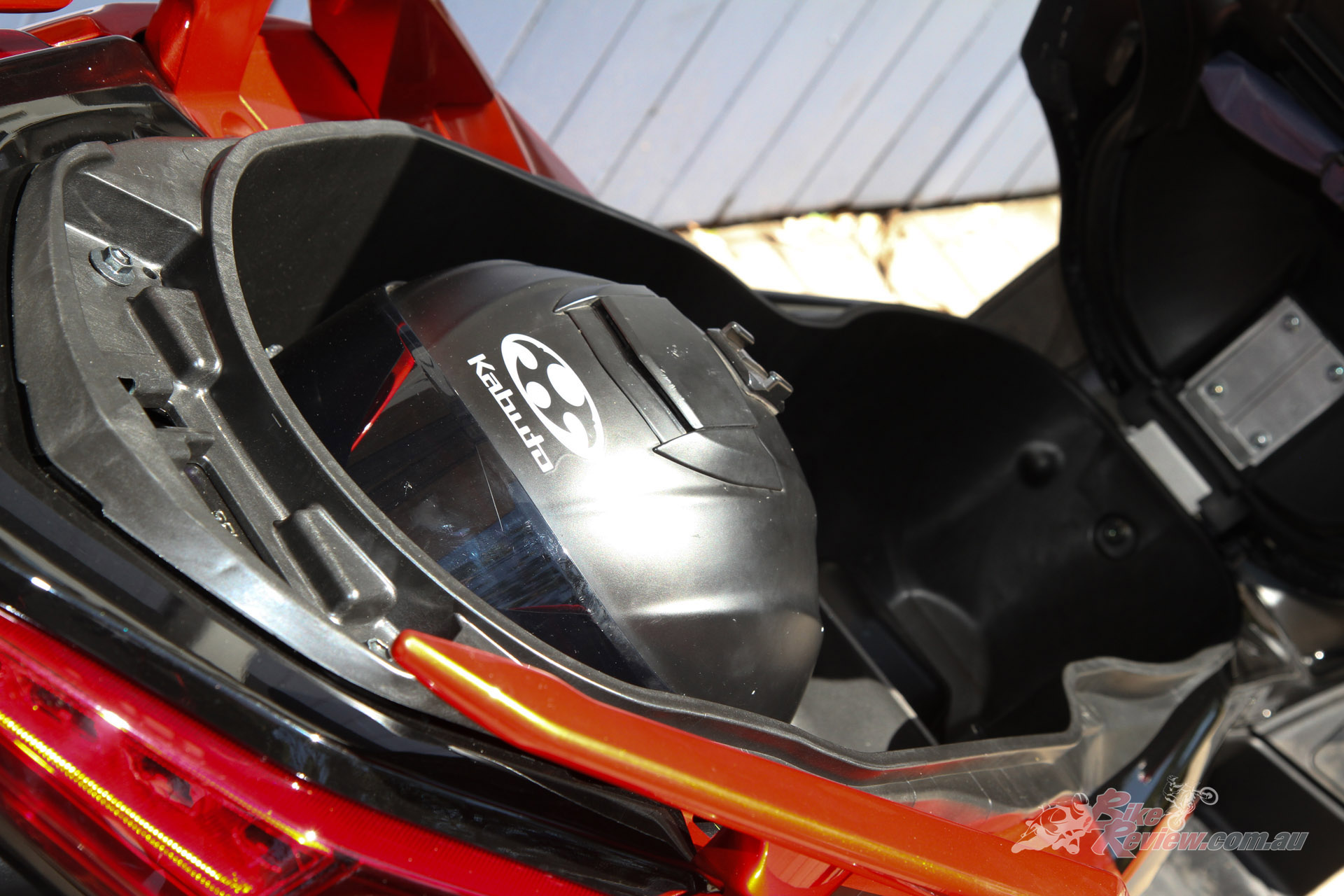
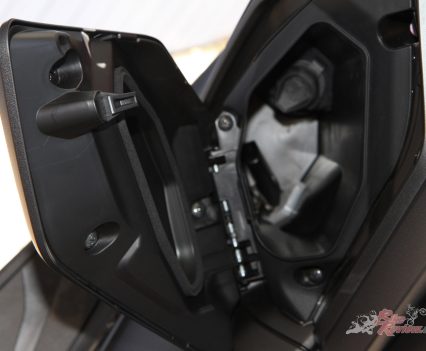
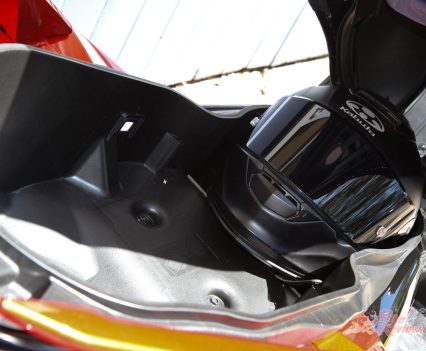
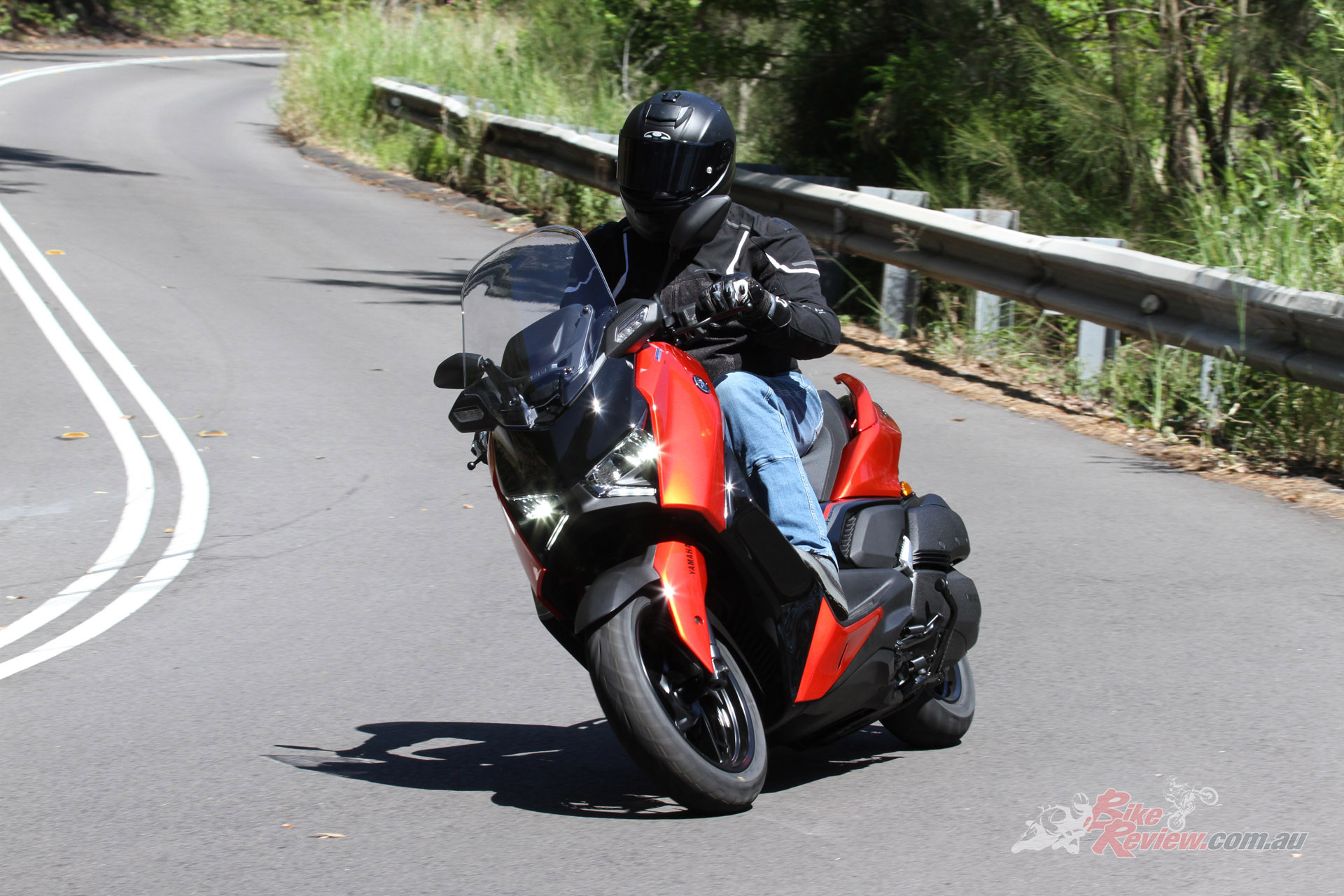
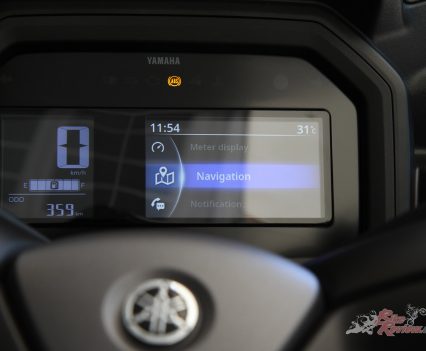
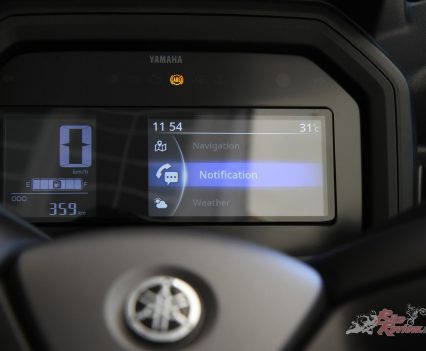
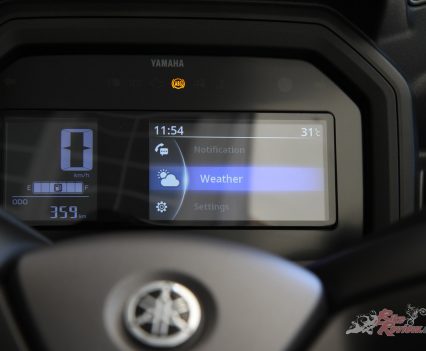
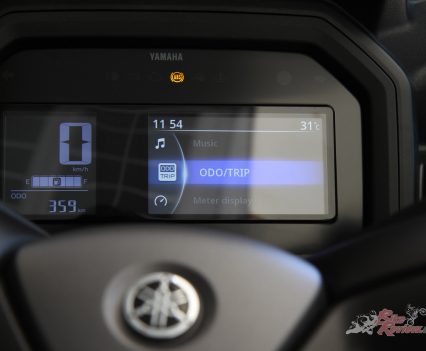
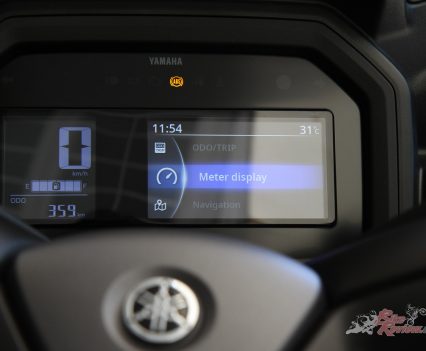
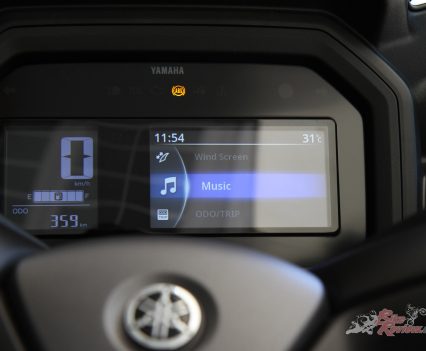
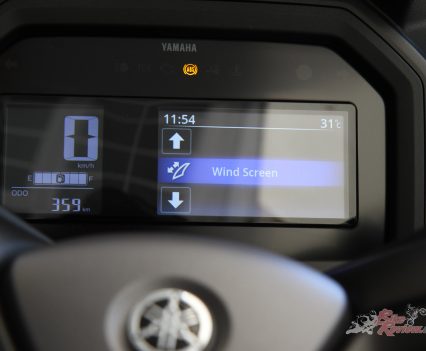
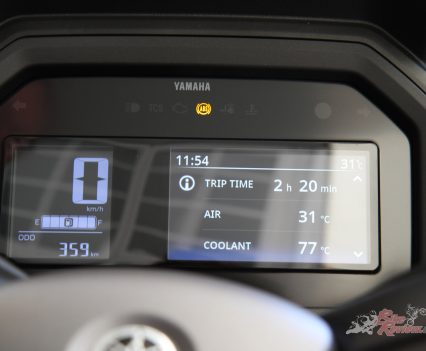
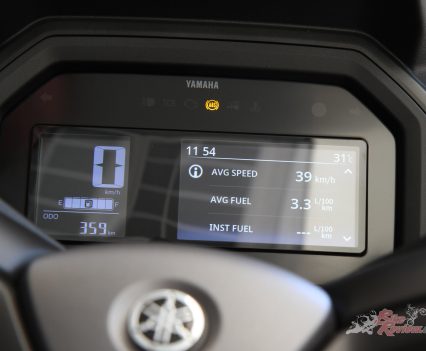
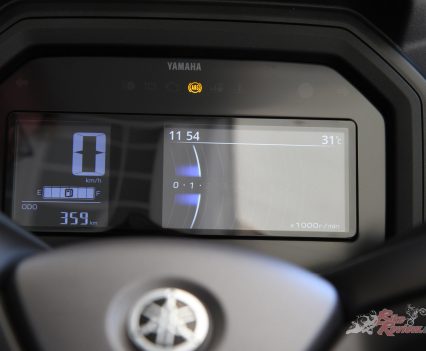
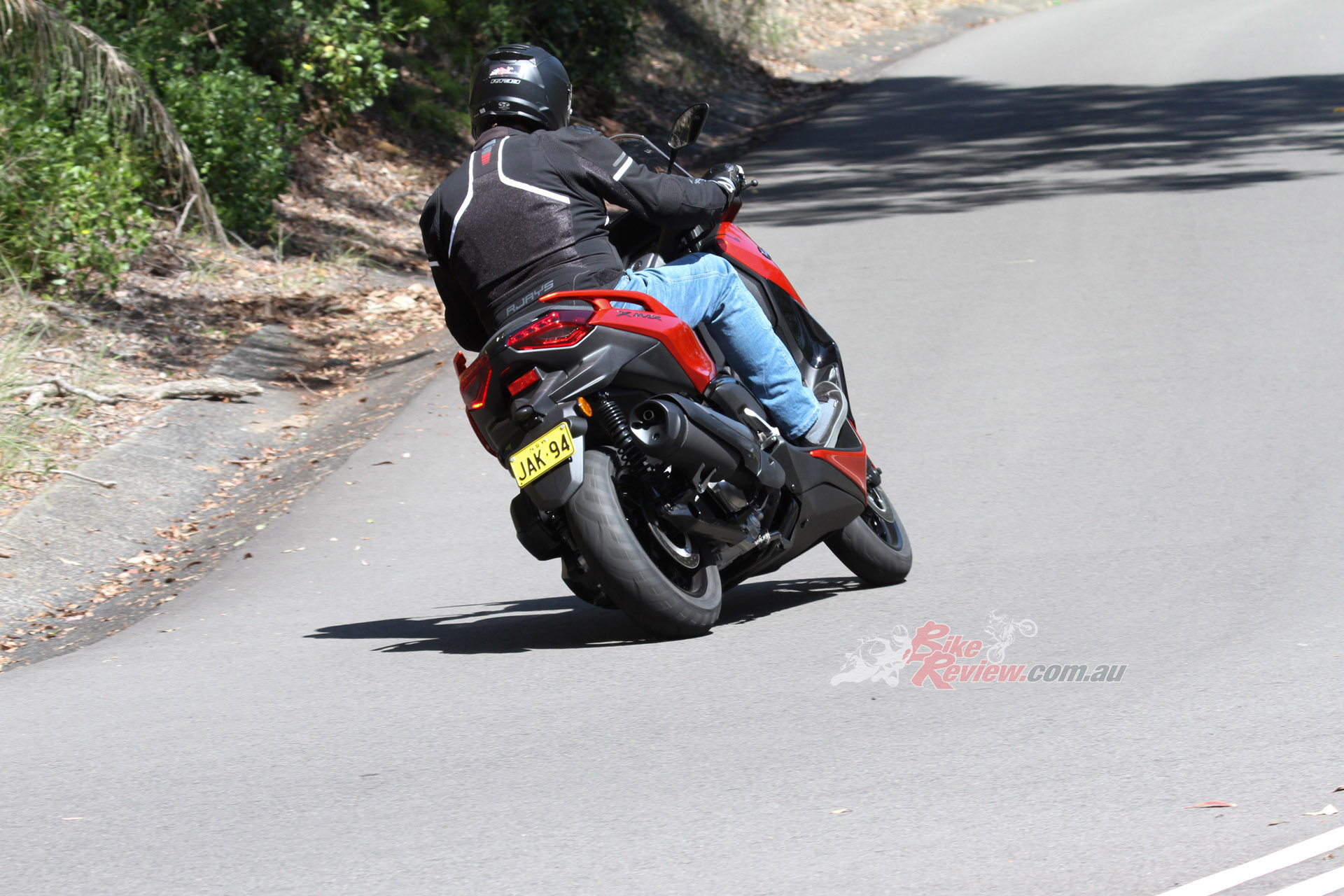
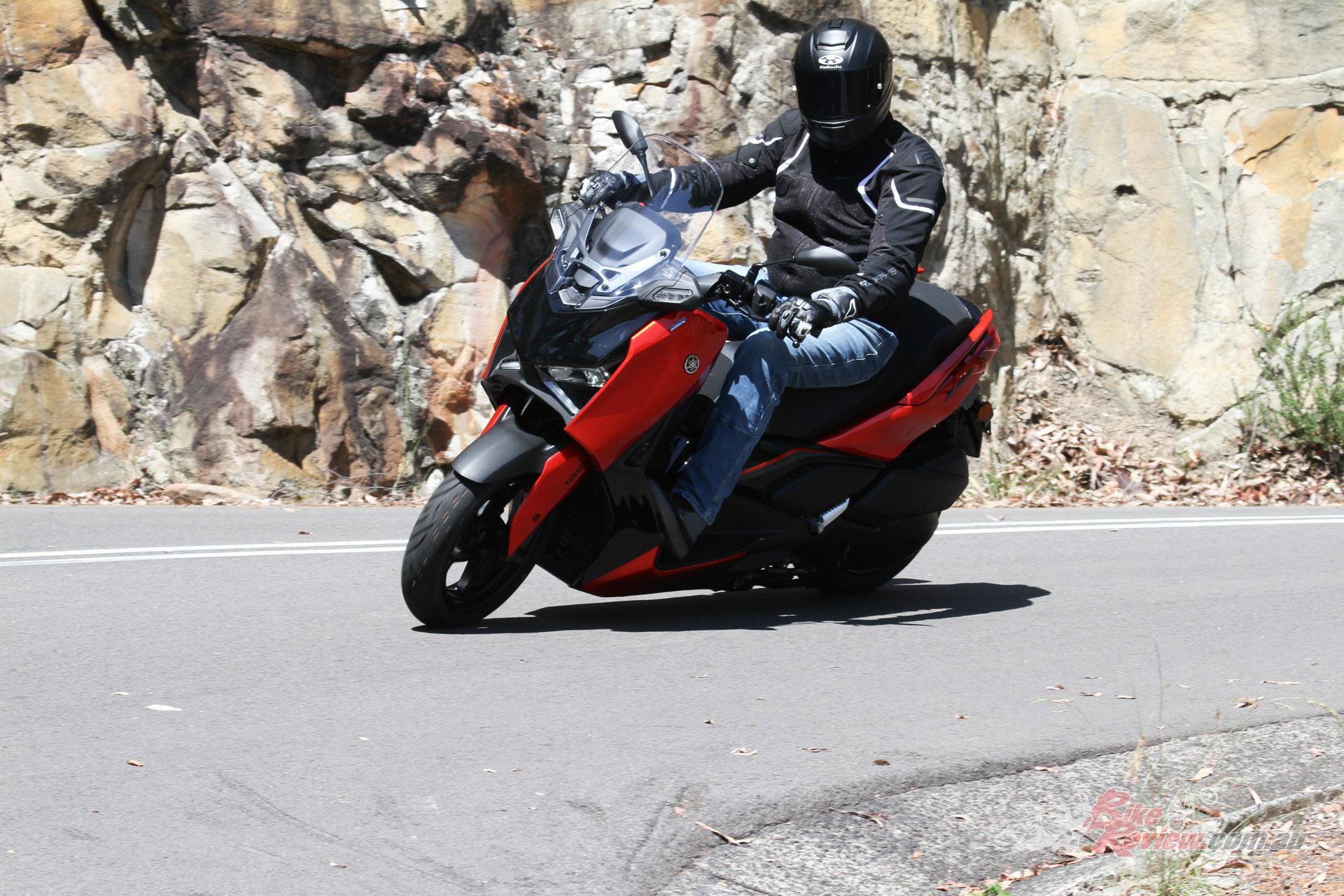
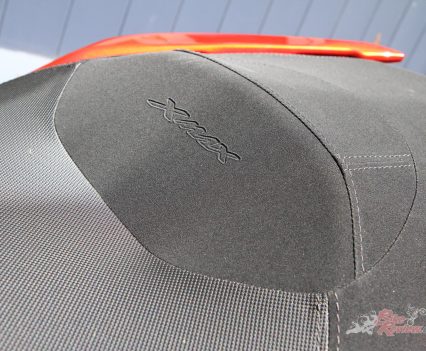
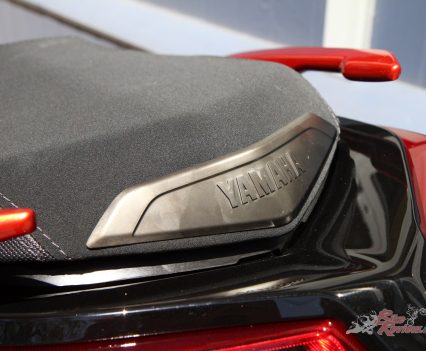
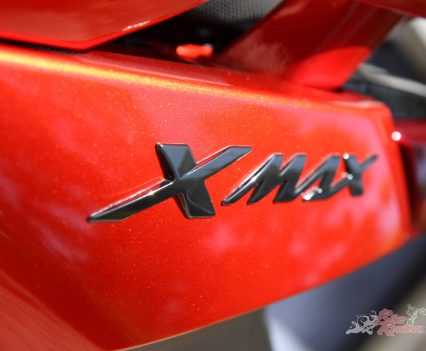
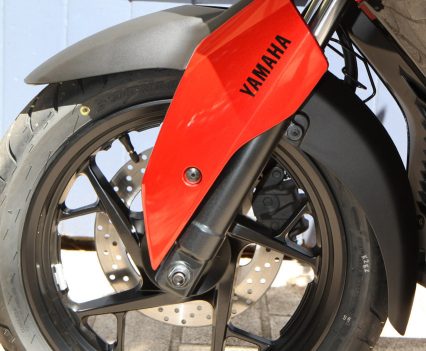
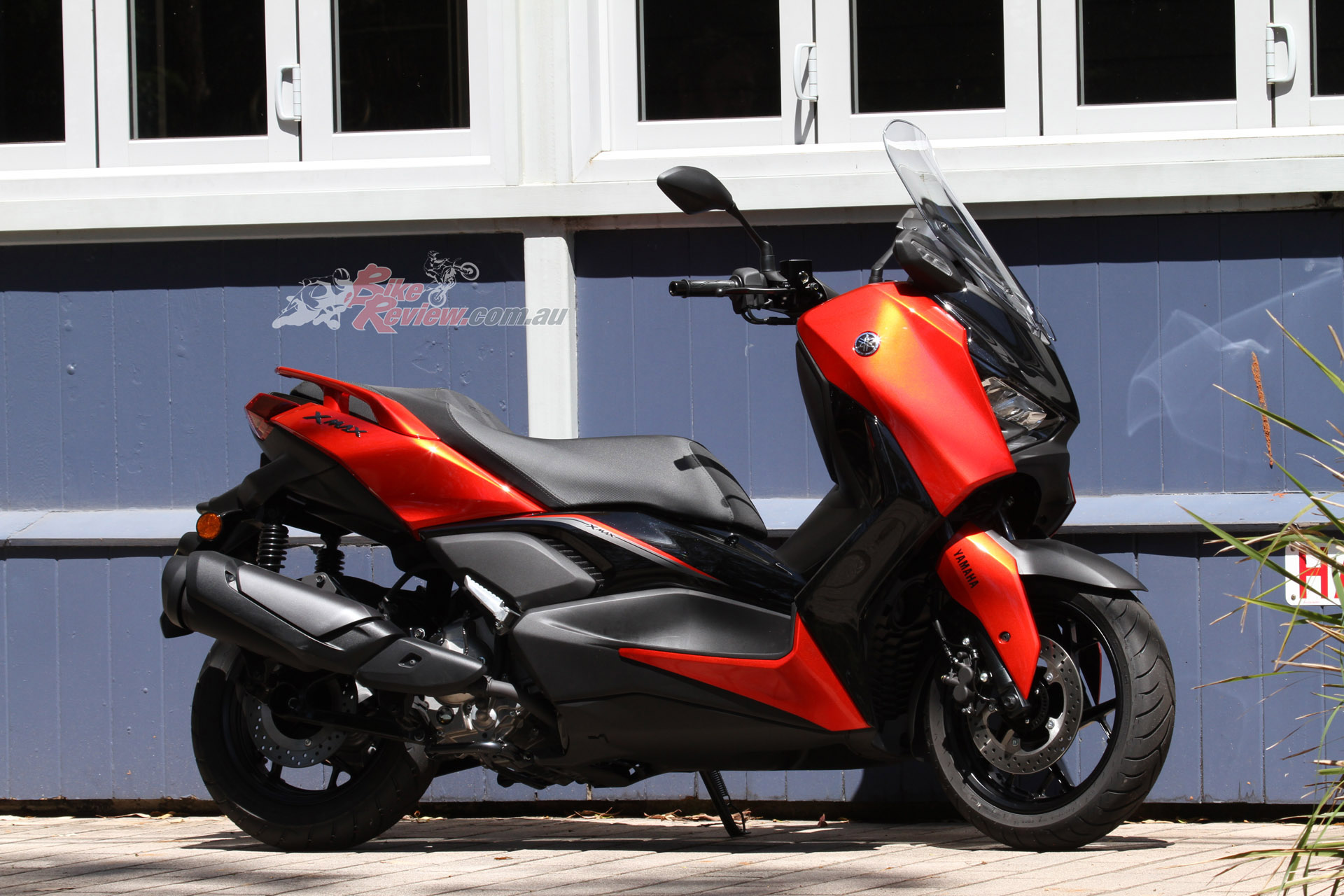

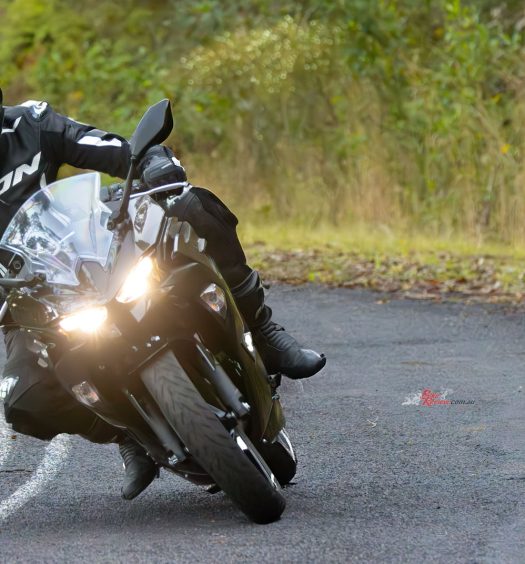






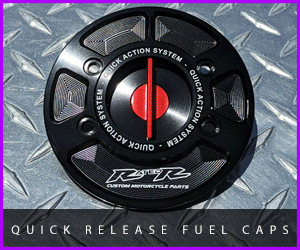








June 23, 2025
Would be interested in a Kymco AK575 Premium 2025 review looks like a very well appointed scooter at a good price
No cruise control for the XMax 300 I see…
Cheers for the review